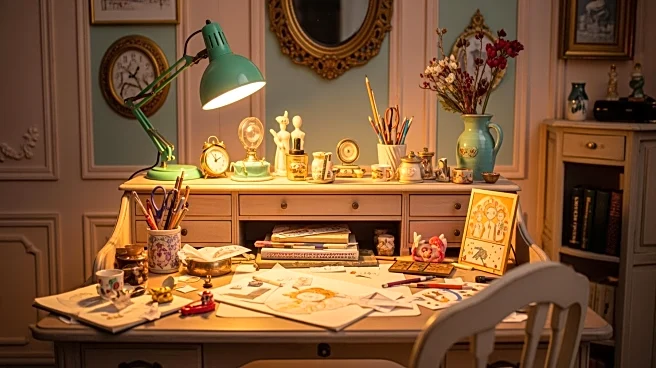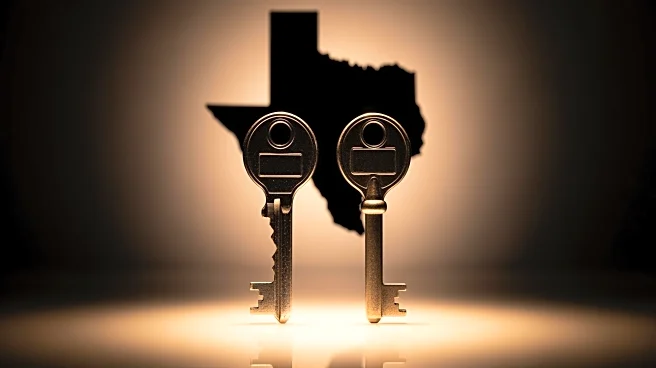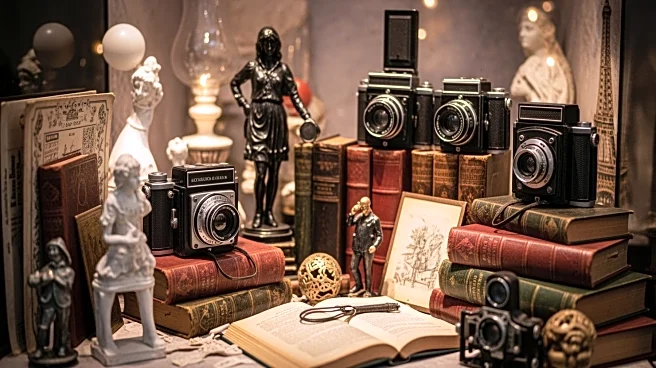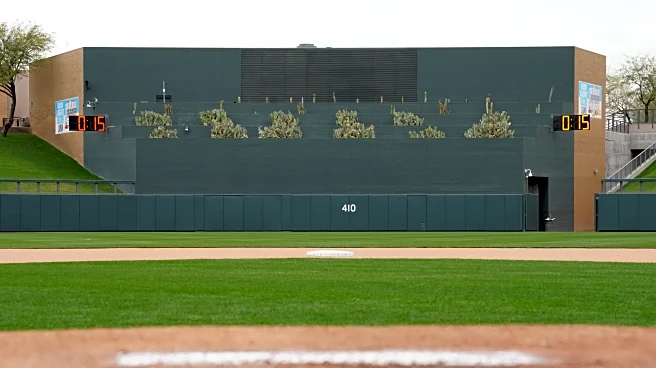What's Happening?
Film director Wes Anderson, known for his distinctive visual style, is collaborating with Jasper Sharp to recreate the studio of Joseph Cornell, a revered 20th-century artist, at the Gagosian gallery in Paris. Cornell, famous for his 'shadow boxes'—assemblages
of found objects—was a significant figure in postmodernist movements like Neo-Dada and Pop Art. Anderson's interest in Cornell's work began in Houston, Texas, where he encountered Cornell's art at local museums. The reconstruction of Cornell's studio is based on surviving photographs and includes objects from the Smithsonian American Art Museum and a private collection. The installation aims to capture the atmosphere of Cornell's studio, presenting it as a storefront tableau to passersby.
Why It's Important?
This artistic endeavor highlights the enduring influence of Joseph Cornell on contemporary creatives, including Wes Anderson. By recreating Cornell's studio, Anderson and Sharp are not only paying homage to the artist's legacy but also introducing his work to new audiences in Paris. The exhibition underscores the cross-generational impact of Cornell's art, which continues to inspire modern artists and filmmakers. It also reflects the cultural exchange between American and European art scenes, as Cornell's work is showcased in a city that held personal significance for him. This project may enhance appreciation for assemblage art and its role in shaping modern artistic movements.
What's Next?
The exhibition, titled 'The House on Utopia Parkway: Joseph Cornell’s Studio Reimagined by Wes Anderson,' will be open to the public at Gagosian in Paris from December 16, 2025, to March 14, 2026. As the installation progresses, Anderson and Sharp's team will continue sourcing objects to complete the set, ensuring authenticity and attention to detail. The exhibition is expected to attract art enthusiasts and fans of Anderson's films, potentially sparking renewed interest in Cornell's work and its influence on contemporary art. The collaboration may also lead to further projects that explore the intersection of film and visual arts.
Beyond the Headlines
The reconstruction of Cornell's studio by Wes Anderson and Jasper Sharp offers a unique opportunity to explore the ethical and cultural dimensions of art preservation and recreation. By meticulously recreating Cornell's workspace, the project raises questions about authenticity and the role of artistic interpretation in preserving historical art environments. It also highlights the cultural significance of bringing American art to European audiences, fostering international dialogue and appreciation. This initiative may inspire similar projects that seek to revive and reinterpret the studios of other influential artists, contributing to the broader discourse on art history and its contemporary relevance.















